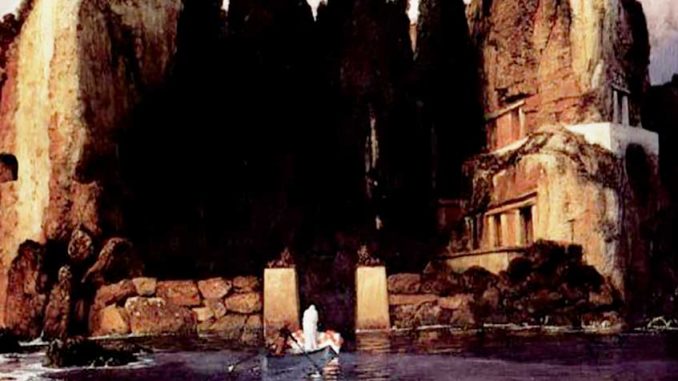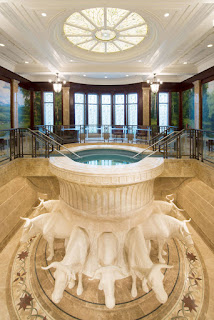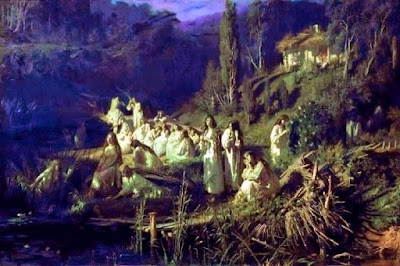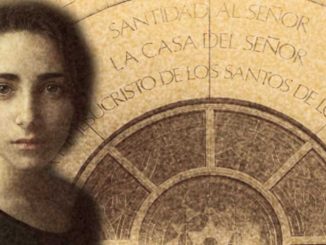
The light of Christ enlightens every man who comes into the world, he also enlightened the Greeks. In his mythology we find Charon and in his history a semblance of something else that is seen. A thread that leads us to the other side of the veil.
Symbology often hides deep truths. The saints of the last days deal with this language almost without realizing it, for example at Holy Communion, at baptism or in the Temple. I decided to do a learning exercise with the «plan of salvation» as the Greeks understood it. I did it for two reasons, first to appreciate how the light of Christ illuminates all of us in every age and second to exercise us in symbolic language in order to better understand the ordinances and the temple.
The Hades
In ancient times, before Christ, it was believed that the fate of the dead was decided by a court resident in Hades, composed of three judges, Minos king of Crete, whose vote was decisive, Radamantis king before Minos and who gave an excellent code of laws and Eaco king of Egina.
To appear before these judges, the deceased had to cross the river Aqueronte (river of affliction, stigia lagoon for the Romans) and for that he had to pay an obolum to Caronte, the boatman. This belief in the burial will be placed under the tongue of the deceased. If you did not come with that coin had to be 100 years punishing for the shore, until you were transported to the palace of justice.
There is a whole geography of Hades which includes four rivers, the Estige river of hatred, the Aqueronte, river of affliction, the Lete river of oblivion and the Piriflegetonte river of fire.
As the Aqueronte passed, the soul of the deceased appeared before the court. The judges weighed his behavior in his mortal life and assigned a place depending on his works. The sentence could end in one of these three kingdoms.
Kingdoms of Hades
- The meadows of Asfódelos, where those who had had a moderate and correct life went. This meadow was full of these flowers which are the favorite food of the dead. There they drink water from the Lete river and that makes them lose their memory. They have been neutral and ordinary people, so they lose their identity.
- Tartarus. To get there you had to cross the flaming river Piriflegetonte. Surrounded by a triple wall, a tower and an impregnable gate was the Tartarus. It is the residence of the wicked, of those who rebel against the gods. It is the hell where its first dwellers were the Cyclops and the Titans. These challenged the deity.
- The Elysian fields. There live the righteous, the warrior heroes, the virtuous people who have stood out for their deeds.
Similarities with the Plan of Salvation
It is worth noting the idea of an organized world that reflects these beliefs. There is a king, Hades, judges, palaces, regions populated with assigned inhabitants and laws governing the underworld. They perceived an order after death and that order reflected the facts of life on earth.
The resemblance to the gospel restored in 1830 and the revelations is astounding. In fact the degree of detail of this myth is even greater than that of the first Christians since they had the detailed plan, but not the geography of the place.
The borders between these kingdoms are rivers and walls, Nephi tells us referring to that division «And I said unto them that it was an awful gulf, which separated the wicked from the tree of life, and also from the saints of God.» (1 Nephi 15:28)
In the parable of the rich man and Lazarus, the Savior uses the image of Hades to teach. The rich man prays to Abraham that Lazarus will dip the tip of his finger in water and refresh his tongue. Abraham among the objections to this request, he says:
«And beside all this, between us and you there is a great gulf fixed: so that they which would pass from hence to you cannot; neither can they pass to us, that would come from thence.. «(Luke 16:26)
This law of borders between kingdoms has as its first actor Charon who did not let the living or the dead pass without burial. What suggests the need for family care, the duty of the living to the dead, being the obolus under the tongue an early glow of the vicarious ordinances of the temple. We, in performing the work of the temple for our ancestors, in a certain way put that coin.
Family duty

That is why the family duty to the dead is as old as man, for «…and the light which shineth, which giveth you light, is through him who enlighteneth your eyes, which is the same light that quickeneth your understandings;» (D&C 88:11) and testifies to the constitution of that kingdom.
In the restoration that flame extinguished by time has been recovered in all its amplitude. And so the idea, belief is incarnated in ordinance, where the power of God is manifested. The power that gives us to cross rivers and steppes to save our own in the temples. There are no longer shadows or dark waters, Elijah the prophet gives us the keys of Hades and the power of Herakles to help our own «to turn the hearts of fathers to sons, and the hearts of sons to fathers, that the whole world might not be struck with a curse. (D&C 110:15)
Our privilege is to delve into the ordinances of the temple and gather all the wisdom they contain. Knowledge whose traces we can glimpse in the past.
One of the virtues that the three judges had in common was equity, and in fact Radamantis is synonymous with a fair trial in antiquity. In a mythology plagued with whims among the gods, an unusual order reigns in Hades. Justice is imparted fairly. In D&C we read this very thing «…according to the moral agency which I have given him, that every man should answer for his own sins on the day of judgment.» (D&C 101:78)

La luz de Cristo
Los tres reinos de gloria de la restauración son evocados desde ese mito con las tres divisiones del Hades, siendo la condición de sus habitantes muy semejantes entre ambas. No voy a extenderme en este aspecto, solo hay que leer la sección 76 de DyC para ver detalladamente las poblaciones que viven en ellos.
Terminamos la clase, reconociendo el poder de la luz de Cristo. La luz que brilla a través de todo y que penetra todas las cosa «…a fin de que estuviese en todas las cosas y a través de todas las cosas, la luz de la verdad,» (DyC 88:6) No ha nacido ninguna persona en este mundo que no haya sido alumbrado por la luz que brilla, que no haya percibido la geografía y disposiciones de un plan, aunque fuese en la mano alzada de sus pueblos y culturas.
Por esa luz responderá el hombre al atravesar el río Aqueronte.






Be the first to comment